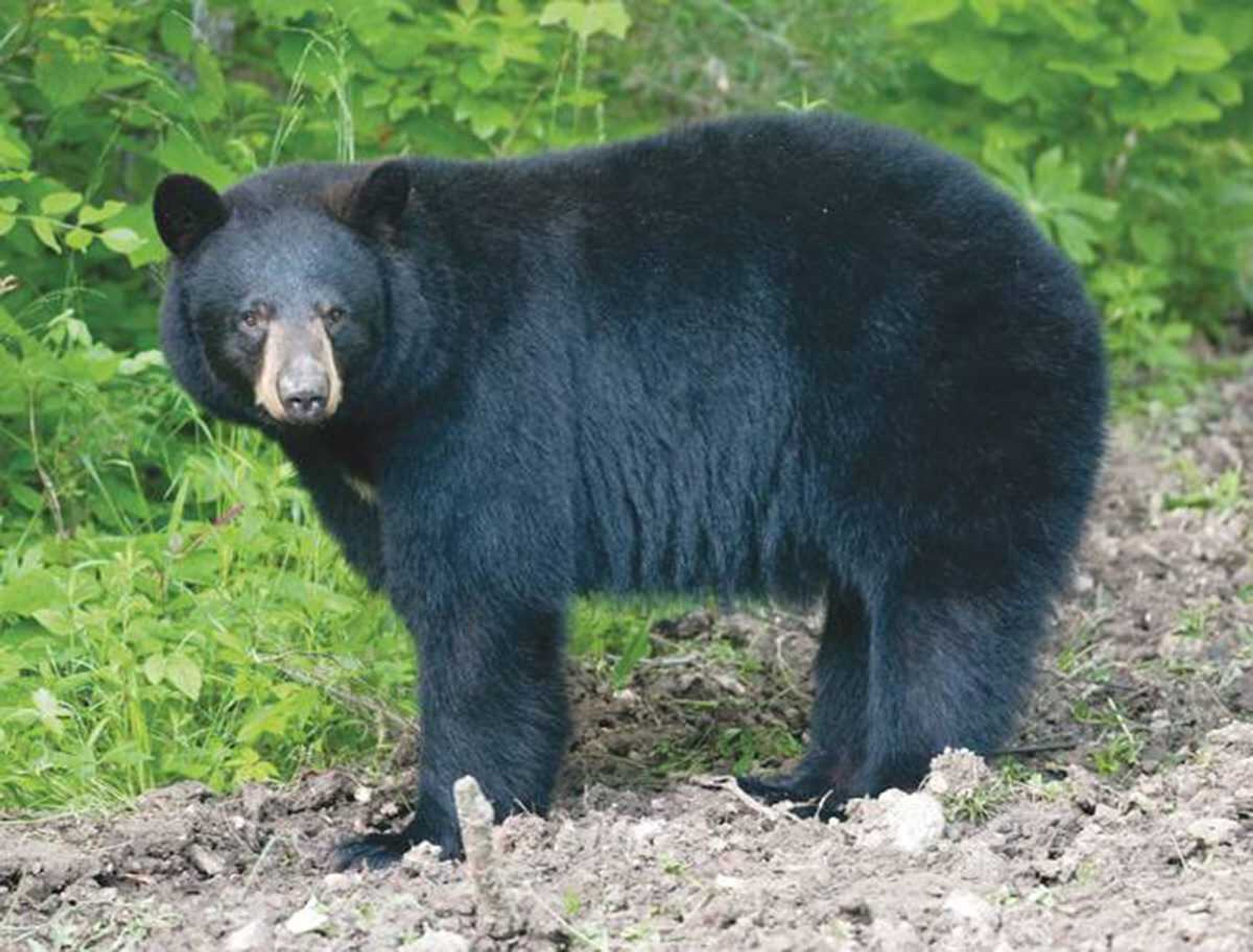Be 'bear aware' as populations increase, cross human paths
Missouri Department of Conservation estimated the state had 300 to 350 bears in 2012, but new research shows the population has grown to between 540 and 800 black bears. SPRINGFIELD, Mo. -- Dana Gray of rural Rogersville remembers spotting something big and brown earlier this month during a walk on her 10-acre property...
Missouri Department of Conservation estimated the state had 300 to 350 bears in 2012, but new research shows the population has grown to between 540 and 800 black bears.
SPRINGFIELD, Mo. -- Dana Gray of rural Rogersville remembers spotting something big and brown earlier this month during a walk on her 10-acre property.
"There it was, just curled up in a big pile of leaves," she recalled. "It didn't move. We just kept on walking and I was thinking, 'Is that a bear?' Just then its ear twitched and I realized it was a bear and it was alive. It wasn't any bigger than a German shepherd."
Gray was one of 186 people who attended a black bear open house last week at the Springfield Conservation Nature Center. She and her neighbor, Joen Cook, wanted to learn more about bears in their area and what to do if they encountered one.
"This bear hangs out along the tree line where we live, near the intersection of 60 and 125 close to Harrison Baptist Church," said Cook. "It's OK as long as it does not come near me. I don't want it killed. But I also don't want it bothering my little dachshund and cocker spaniel when we go on our walks. I don't want it to come after me or my dogs!"
Gray plans to buy an air horn to scare away the bear if she encounters it again. That's one good way to deter bears from getting too close to humans, though keeping food out of their reach is best, according to Laura Conlee, bear research expert with the Missouri Department of Conservation.
She said MDC has been tracking the growth of Missouri's black bear population since 1993. In 2012, MDC estimated Missouri had 300 to 350 bears, but the newest research shows the population has grown to between 540 and 800 black bears, mostly south of I-44.
Their numbers are growing about 9% a year, and that means there likely will be more interactions with humans, the Springfield News-Leader reported .
"Nuisance complaints are becoming more common," Conlee told the crowd. She acknowledged MDC has had to euthanize a few black bears that lost their fear of people, in part because the bears were able to find easy meals near homes.
"It's true that a fed bear is a dead bear," she cautioned.
Conlee said black bears are drawn to bird feeders, trash cans, chicken coops and beehives, though not necessarily for the honey in the hives. The bears can easily rip apart a beehive to find the juicy and protein-filed bee larvae.
"Bears will use agricultural land for food (especially when corn ripens) and residential areas where food is easy to get to," Conlee said. "They'll eat whatever is easiest and most available."
She likened black bears to "big raccoons" because of the way they search for a wide range of food. Unlike raccoons, black bears in Missouri can grow to 500 pounds or more. Like raccoons, black bears are tempted by backyard bird feeders.
"When bears learn about bird feeders, they'll sometimes become quite gentle with those feeders because they know they'll be filled up again," Conlee said.
So far, there hasn't been a documented black bear attack on a human in recent Missouri history, Conlee noted. But as bear numbers increase, she urged people to learn how to be "bear aware" by not attracting them with food, making noise while walking in the woods and backing away slowly -- not running -- if a person encounters a bear up close.
MDC encourages people to report bear sightings so the department can better track where bears are located and where they are moving. The agency has tagged numerous bears -- females get a yellow ear tag, while males get a blue tag -- and some wild bears are caught and equipped with radio-transmitting collars that show where the bear is in real time.
Conlee said the bear population is thriving so well that MDC is preparing to lay the groundwork for a bear-hunting season to help manage their numbers.
"Our benchmark was 500 bears, and we know we've already exceeded that," Conlee said. "But we don't yet have a time frame for a hunting season."
Much like it has done with the wild elk herd reintroduced to southeast Missouri in 2011, MDC will take public comments about the possibility for a bear hunting season. Elk numbers have risen enough that MDC plans to have its first elk hunting season in the fall of 2020.
Caleb and Lacie Griffin of Strafford said they both looked forward to MDC opening a bear season.
"I'm all for it," Caleb Griffin said. "It's a good way to control the population. If it grows to 1,500 or 2,000 bears, it will become a problem. I think hunting is a crucial part of conservation."
The Griffins said they've encountered one bear near Strafford, but it had been struck and killed along a highway.
Lacie Griffin said nothing would go to waste if she were to hunt a Missouri black bear when a season is opened.
"We don't hunt it unless we're going to eat it," she said.
Connect with the Southeast Missourian Newsroom:
For corrections to this story or other insights for the editor, click here. To submit a letter to the editor, click here. To learn about the Southeast Missourian’s AI Policy, click here.









